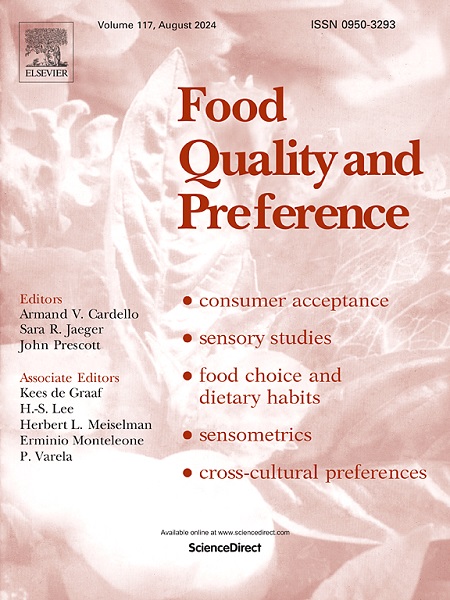Gastronomizing legumes: Can we increase legume consumption in restaurants by improving the sensory experience and modifying the portions of legumes and meat on the plate?
IF 4.9
1区 农林科学
Q1 FOOD SCIENCE & TECHNOLOGY
引用次数: 0
Abstract
Adopting diets that recalibrate the balance between animal and plant proteins emerges as a sustainable solution in response to global population growth and climate change. This study investigates the impact of reducing animal protein (meat) portions in favour of plant proteins (legumes) on consumer appreciation and consumption in restaurant settings. Employing a single-blind protocol, 271 participants were engaged in an experimental restaurant. The experimental design examined the effects of meat-to-legume ratio (reference: 150 g meat, 200 g legumes; reduced: 95 g meat, 260 g legumes), legume types (chickpeas vs. white beans), and meat types (pork vs. beef). Appetite and liking were assessed using visual analogue scales, while food consumption was measured post-meal. Overall, participants consumed between 100 % and 80 % of their main course. ANOVA analysis on reference meat-to-legume ratio, legume type, and meat type effects on taste and appetite revealed minimal differences (P < 0.05). Notably, the reference meat-to-legume ratio scored lower than the reference in overall main course appreciation (7.23/10 vs. 8.31/10) and taste (7.26/10 vs. 8.40/10) (P < 0.05). This underscores the potential to enhance legume proportion on the plate while preserving satiety and overall consumption through meticulous attention to legume sensory experience and protein portion adjustments.
求助全文
约1分钟内获得全文
求助全文
来源期刊

Food Quality and Preference
工程技术-食品科技
CiteScore
10.40
自引率
15.10%
发文量
263
审稿时长
38 days
期刊介绍:
Food Quality and Preference is a journal devoted to sensory, consumer and behavioural research in food and non-food products. It publishes original research, critical reviews, and short communications in sensory and consumer science, and sensometrics. In addition, the journal publishes special invited issues on important timely topics and from relevant conferences. These are aimed at bridging the gap between research and application, bringing together authors and readers in consumer and market research, sensory science, sensometrics and sensory evaluation, nutrition and food choice, as well as food research, product development and sensory quality assurance. Submissions to Food Quality and Preference are limited to papers that include some form of human measurement; papers that are limited to physical/chemical measures or the routine application of sensory, consumer or econometric analysis will not be considered unless they specifically make a novel scientific contribution in line with the journal''s coverage as outlined below.
 求助内容:
求助内容: 应助结果提醒方式:
应助结果提醒方式:


